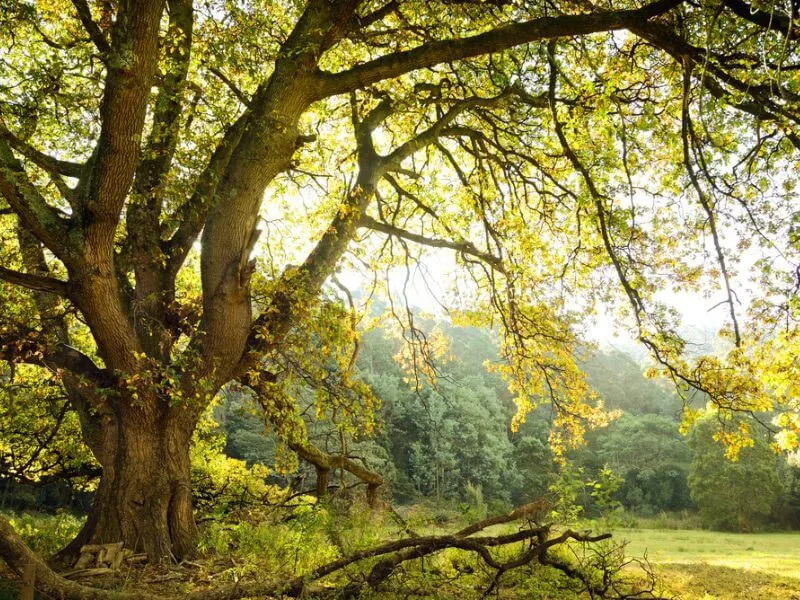
Table of Contents
The Celtic Tree of Life Symbol
The Celtic Tree of Life, also known as the Celtic World Tree, Irish Tree of Life or Crann Bethadh in Irish, is a Celtic symbol that depicts an oak tree with upward reaching branches with a network of roots that is usually connected by an interwoven Celtic knot pattern.
This popular design is frequently incorporated into pendants, wedding rings and other silver and gold celtic jewelry.
More recently, the Celtic Tree of Life tattoo has also become a sought after Celtic symbol design.
Beyond the aesthetically appealing appearance of this Celtic symbol lies a much deeper meaning that can be traced back thousands of years.
As a short note, please be aware that there is a lot of information about the Celtic symbol Tree of Life online. Some of it is fact or scholarly interpretations, but unfortunately a lot is also fiction. It is a good idea to be critical of what you read.
You will find more information about Celtic Symbols, Celtic Knots and Native Irish Trees on our website.
Origin of the Tree of Life
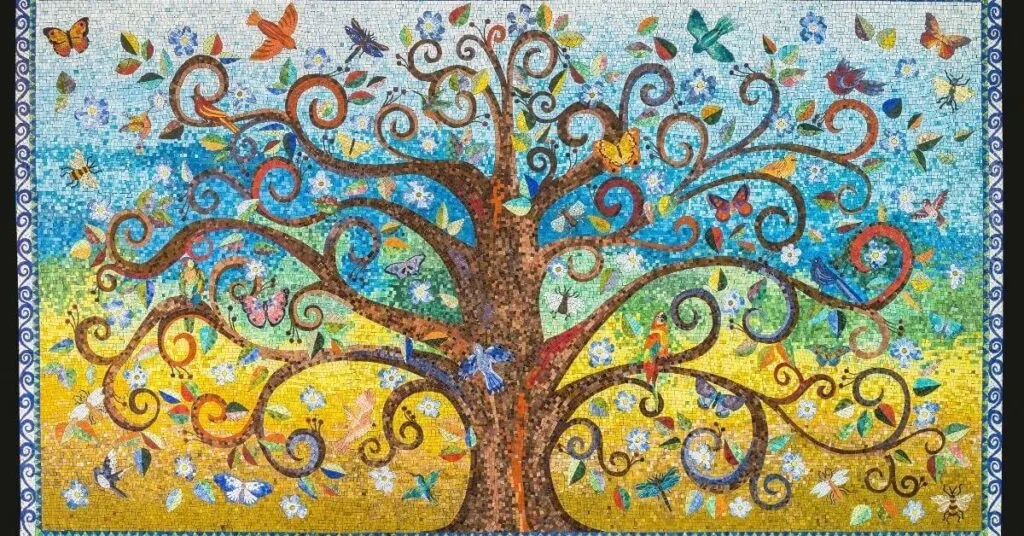
The Tree of Life symbol can be found recurring in many cultures and religions across the globe.
It is clear that the ancient Celts were neither the first, nor the only ones to hold this symbol in high regard.
Some of the earliest examples to support the Tree of Life origin date back to carvings from Ancient Mesopotamia.
Other cultures also saw the Tree of Life as central to their beliefs.
In pre-Islamic Persian mythology the Gaokerena (or white Haoma) world tree is responsible for producing all seeds.
Chinese mythology also incorporates the Tree of Life in a Taoist story.
A dragon lies at the base of the tree while a phoenix is at the top.
Immortality is granted to anyone who eats the magical peach fruit that is produced once every 3000 years.
In Christianity, a tree also forms a central role in the story of Adam and Eve in the Garden of Eden.
However, it is probably Norse culture that was the most influential for the Celtic Tree of Life.
It is quite possible that the concept of Yggdrasil, the sacred ash tree at the center of the Norse spiritual Cosmos that holds together the Nine Worlds, is the inspiration behind the Celtic symbol Tree of Life.
The Importance of Trees in Celtic Culture
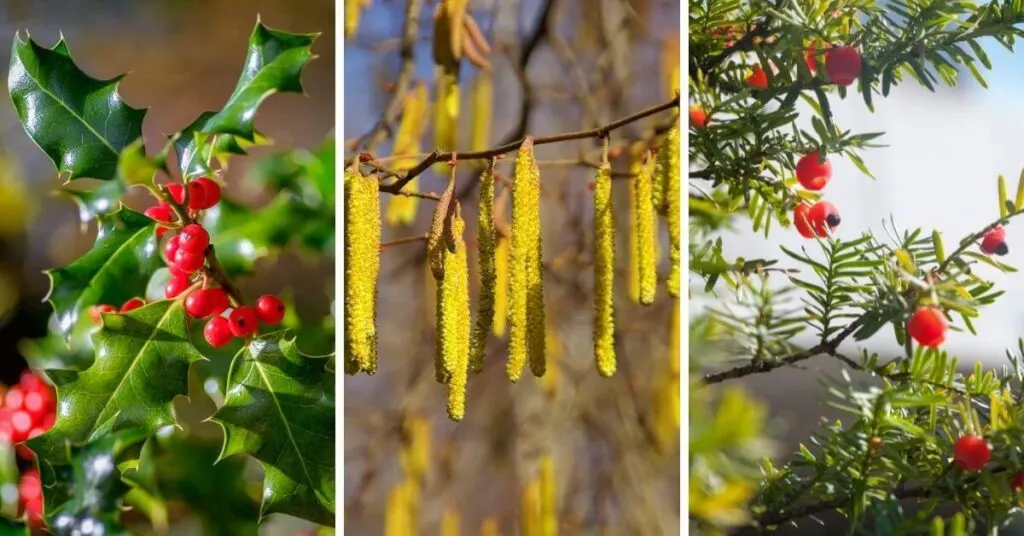
In order to fully understand the meaning behind the Celtic Tree of Life, it is worth knowing how important trees were in Celtic culture in general.
The life Celtic people experienced revolved around the natural world.
Trees were a vital resource and provided food, medicine, timber. In addition to being physical resources, the Celtic beliefs also identified trees as having significant spiritual significance.
Under ancient Irish law (Brehon Law), Irish people ensured that trees were well protected and any vandalism would result in a hefty retribution payment to the owner of the tree.
Trees were classes according to four levels of importance as part of Brehon Law: Lords of the Wood (Aigrig Fedo); Commoners of the Wood (Aithig Fedo); Lower Divisions of the Wood (Fodla Fedo) and Bushes of the Wood (Losa Fedo).
An offence committed against one of the trees from the grouping Lords of the Woods (oak, hazel, holly, yew, ash, Scots pine and wild apple-tree) would result in a penalty that was to be paid in two valuable milk cows and one heifer, plus potential other compensation depending on the act committed.
The amount of fine may also have been dependent on the time of the year. If it was during the growth period of the tree (rather than the dormant period of the year) the fine was greater due to the increased likelihood for harm (for example, increased chance of rot or disease) inflicted on the tree.
Interestingly, there is no reference to the felling of sacred trees from this Lord of the Woods group, which must have been one of the most horrendous acts possible to comit.
(For more fascinating insights into trees in early Ireland, take a look at our post on Native Irish Trees.)
Oak Trees in Celtic Culture
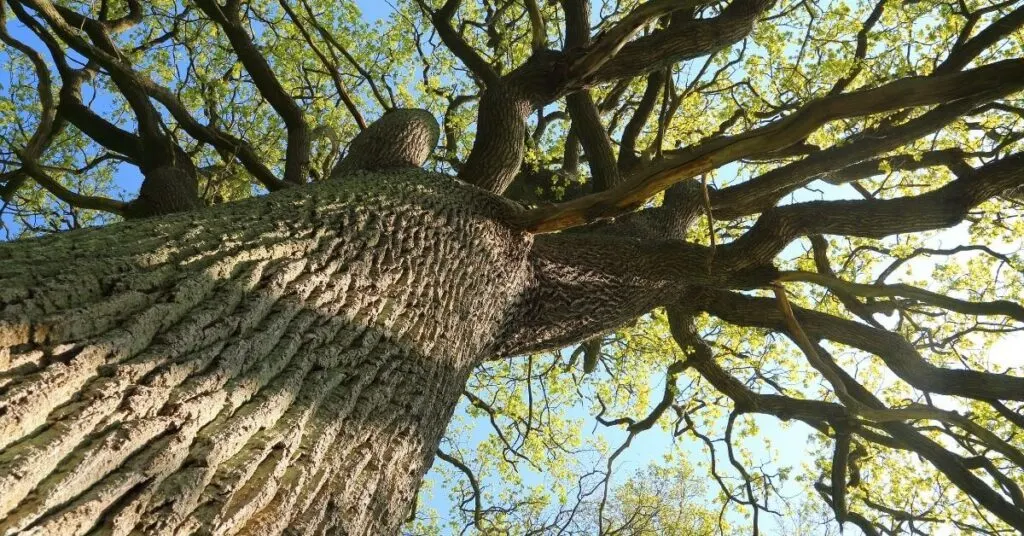
Oak, or dair in Irish, was considered a very valuable tree by the Celts, in terms of its resources and also as a Celtic tree symbol that was a connection to the spiritual realm.
The slow growing timber of the oak is solid and was useful for building sturdy fences and buildings, such as the Dairtheach (oak-house) in Celtic times.
Oaks also provided acorns, a welcomed food source, probably for human consumption, as well as feed for pigs.
Dyes extracted from the bark were also used to tan leather.
The word “druid”, possibly stems from the work “dair” for oak. These highly esteemed individuals in Celtic culture, had particularly strong connections with this tree species.
Oak groves were revered places of worship and ritualistic practice for the druids. Oak trees were also a good place to find mistletoe, the highly sacred plant that the druids thought possessed special powers.
Celtic settlements were also established near a central tree, often an oak, which served as a focal point for the community or “Tree of Life”.
This connection with oak can still be seen in Irish culture and history today.
The Irish and later Angelised place names can be traced to the oak origins. For example Derry comes from Daoire, or Oak Wood, Kildare from Cill-dara, or Church of the Oak and Adare, or Ath-dara, meaning the ford of the oak tree.
Trees acted as portals to the Otherworld in the Celtic belief system and they were also thought to be home to their ancestors. These could be called upon to help guard and protect against evil spirits.
Celtic Tree of Life Meaning
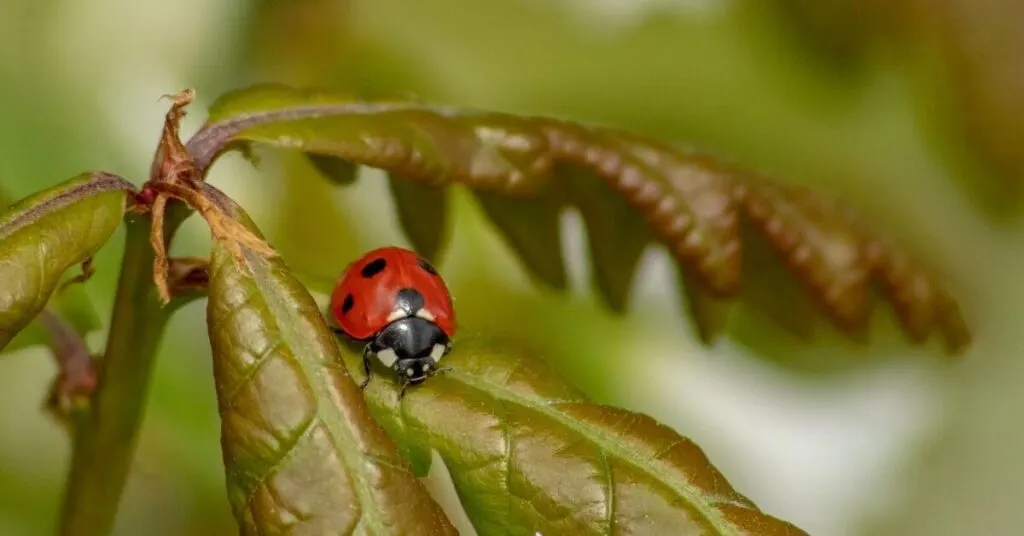
As the Celtic tradition of transferring knowledge from one generation to the next was oral, much of the meaning Celtic people associated with trees, and their culture in general has been lost or altered over time.
Different meanings behind the Celtic Tree of Life have been suggested, but they are difficult to verify.
One of the most prominent ideas behind the Celtic tree meaning is that the Celtic Tree of Life is an oak tree that connects the world of the heavens above with the earth below, thus bringing balance and harmony to the worlds.
The Celtic Tree of Life tapestry of outstretched branches, stable trunk and extensive root network embedded in the earth are connected within a circle symbolising a continuum.
This meaning compliments the natural cycle of birth, death and rebirth that would have been very central to the Celtic circle of life.
The Celts would have been highly aware of the annual cycle of the deciduous oak trees.
Spring heralds the leaf buds, summer is a period of growth followed by the shedding of leaves in fall and the bare trees during winter only to be repeated again the next year.
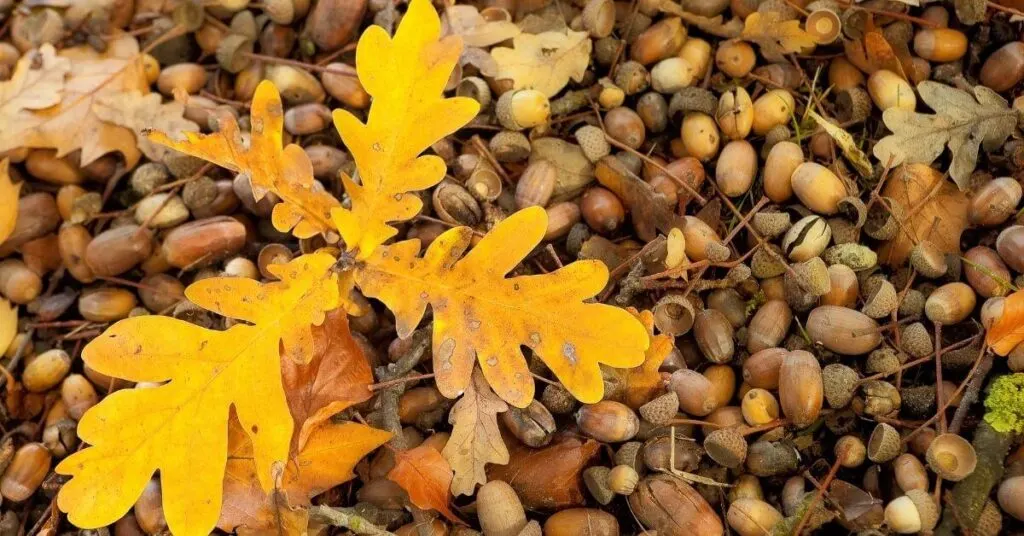
Celtic Tree of Life Symbolism
Undoubtedly the Celtic Tree of Life is a symbol of wisdom, longevity and strength.
Oak trees have the ability to grow live for a couple of hundred years if the right environmental conditions are present.
As the Celts believed that trees are connected with their ancestors, they also believed that trees that live for long periods of time also accrued vast amounts of knowledge. Hence this is the reason why oaks are connected with wisdom and longevity.
Timber from the oak tree is strong and much heavier and denser than other softwoods. This desirable trait of oaks is one of the reasons why it was a much prized, high quality building material.
Celtic Tree of Life Knot
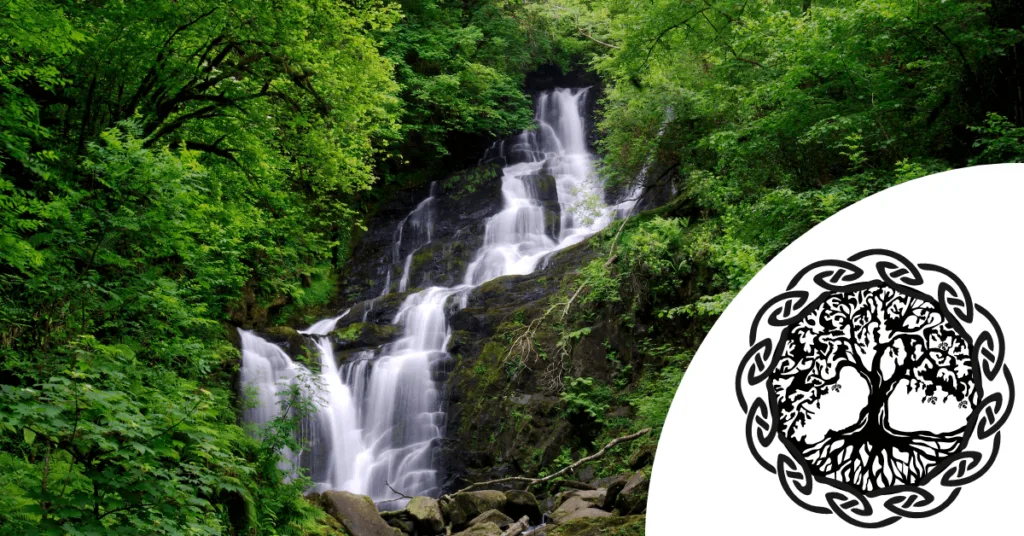
While many variations of the Celtic Tree of Life design exist, the traditional depiction of the design incorporates an oak tree with the interwoven roots and branches forming an interlace pattern of Celtic knotwork in a circle around the tree.
Quite often this design is shown without a true beginning or end point in the knot work. This can be thought of as symbolising unity and oneness. It is probably a more modern interpretation of the design.
Other variations of this Celtic Tree of Life design do not connect the roots and branches with knotwork.
When looking at Celtic tree symbols, the oak appears again in the form of the Dara Knot, which is often thought of as the Celtic Symbol for Strength.
Frequently Asked Questions
Is there an authentic version of the Celtic Tree of Life knot?
The ancient Celtic Tree of Life is featured on many different Celtic designs. It has been incorporated in everything from Celtic Tree of Life necklace designs to Claddagh rings, Celtic crosses and tattoos.
Due in part to its popularity, there are many different versions of the design currently available, some of which are more stylized than others.
Although there is no one authentic version of this Celtic knot Tree of Life symbol, we believe that the image in this article is a good representation.
Where can I learn more about Celtic symbols?
In our article Celtic Symbols, you can learn more about the different ancient symbols and their meanings. You will also get useful insights into what symbols are true ancient Celtic symbols and what ones are more modern inventions. There is also a section about the Celtic Symbols Tree of Life.
Where can I find examples of other Celtic knots?
This article about Celtic Knots and Meanings gives a good overview of the main Celtic Knots including the Trinity knot, Celtic Love knot and more. For further information about Irish Symbols, you can read about in the blog.
Where can I learn more about Irish Trees?
Native Irish Trees have a fascinating history, discover why in our article about this topic.
This post contains affiliate links. If you click on one of them, we might receive a small commission (at no extra cost to you).
Thanks for your support!
